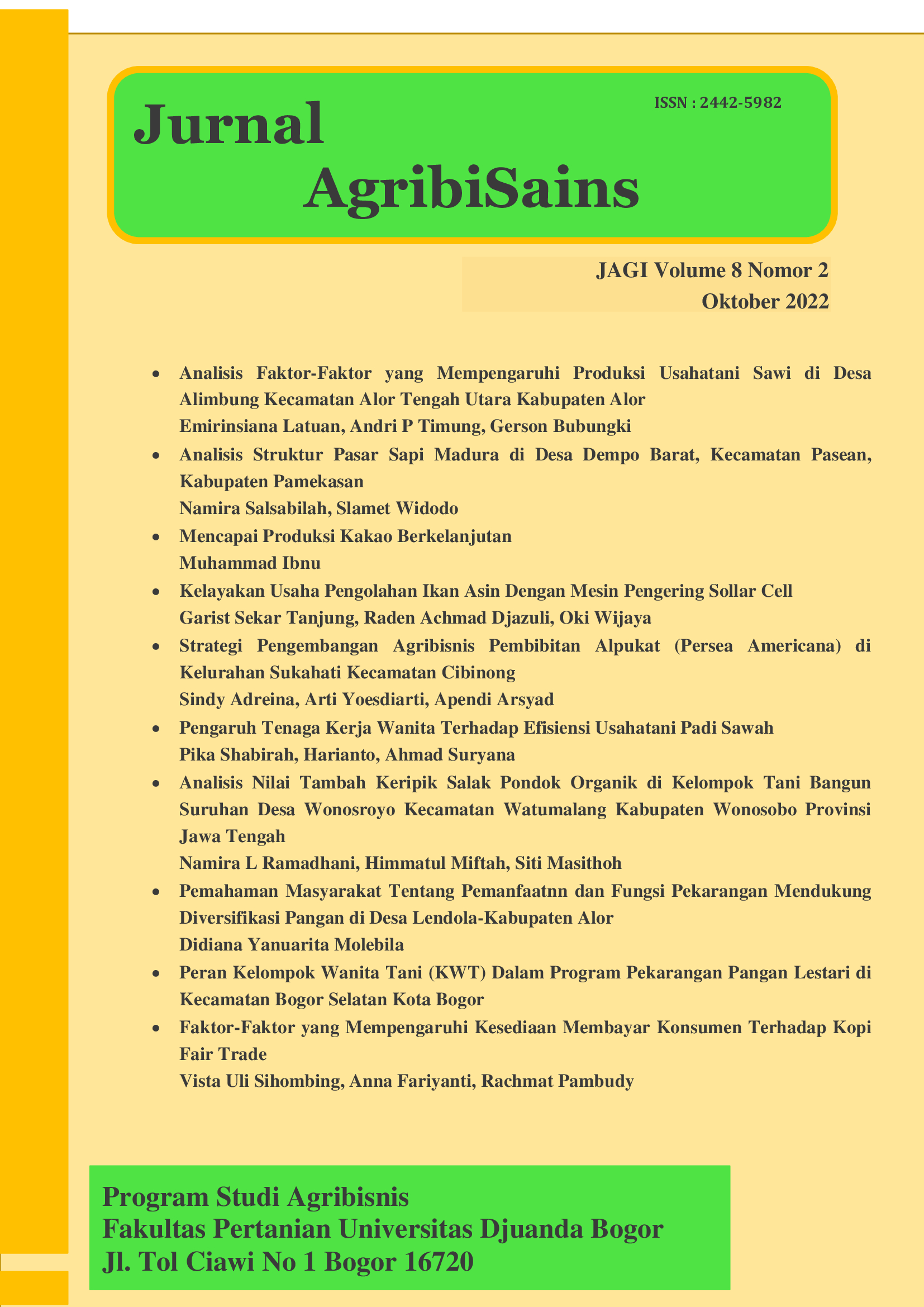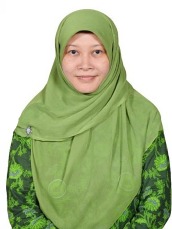Kelayakan Usaha Pengolahan Ikan Asin Dengan Mesin Pengering Sollar Cell
(Studi Kasus: Desa Tanjung Binga, Kecamatan Sijuk, Kabupaten Belitung)
DOI:
https://doi.org/10.30997/jagi.v8i2.6281Abstract
Tanjung Binga is the largest salted fish producing area in Belitung Regency. The abundance of fish production in this area allows fishermen to produce various types of processed fish to extend the shelf life of their catch, especially for products exported outside the island. One of the mainstay processed products of fishermen is salted fish. However, currently the problem in processing salted fish occurs in the drying process which is still carried out in open spaces with traditional drying methods using sunlight. So that during the rainy season, the drying process can be hampered, which will affect the quality of the salted fish products produced. Therefore, this study aims to analyze the feasibility of processing salted fish using a portable solar cell dryer. The methodology used is to evaluate the financial feasibility and sensitivity analysis. The results showed that the salted fish product had the eligibility criteria with a PBP value of 0.48 years; NPV of Rp 3,268,039,778; B/C ratio of 1.37; and an IRR of 208.3% under normal conditions. In scenario 1, this effort is still considered in the feasible criteria. In scenario 2 (raw materials increase, total production decreases, interest rates increase), then the business is no longer feasible. Thus the salted fish processing business using a drying machine which is intended for fishermen and salted fish business actors deserves to be continued.
References
Bunga, R. (2020). Potensi Laut dan Perikanan Indonesia Berpotensi Hasilkan Ribuan Triliun. Kompasiana.
Daryanto, A. (2007). Dari Klaster Menuju Peningkatan Daya Saing Industri Perikanan (Edisi Januari 2007).
Duguma, L. A. (2013). Financial Analysis of Agroforetry Land Uses and Its Implications for Smallholder Farmers Livelihood Improvemnt in Ethiopia. Agroforestry Systems, 87, 217–231. https://link.springer.com/article/10.1007/s10457-012-9537-1
Giatman, M. (2022). Ekonomi Teknik. Rajawali Pers.
Gittinger. (1986). Analisis Ekonomi Proyek Proyek Pertanian. (Seri Edi d). UI-Press Johns Hopkins.
Gray, C., Simanjuntak, P., Sabur, L., Maspaitella, P. F., & Varley. (1993). Introduction to Project Evaluation. In Second Edition. Gramedia.
Harahap. (2002). Accounting Theory of Financial Report. Bumi Aksara.
Kadariah, K. L. (2001). Economic Analysis of Project Evaluation (second). Fakultas Ekonomi Universitas Indonesia.
Purna, W., Masengi, S., Sipahutar, Y. H., Perceka, M. L., Yuniarti, T., & Bertiantoro, A. (2021). Penerapan Kelayakan Pengolahan Ikan tembang (Sardinella fimbriata) Asin dalam Peningkatan Keamanan Pangan di Sentra Pengolah Ikan Asin Kabupaten Tangerang. Prosiding Simposium Nasional VIII Kelautan Dan Perikanan Fakultas Ilmu Kelautan Dan Perikanan, Universitas Hasanuddin, Makassar, 111–120.
Purnomo, & Nurhayati. (2018). Appropriate Technology for Salted Fish Business in Rob ’ s Sacrificial Village. Jurnal Surya Masyarakat, 1(1), 47–53.
Riyanto, H. A., Usman, & R, H. (2016). Build a Coincident Index for Consumption and Investment. Chapters in the Book of Flowers for Indonesian Fiscal Macroeconomic Policy, Macroeconomic Policy Center, Fiscal Policy Agency, Ministry of Finance,. PT Nagakusuma.
Sutanto, H. A., & Imaningati, S. (2014). Tingkat Efisiensi Produksi Dan Pendapatan Pada Usaha Pengolahan Ikan Asin Skala Kecil. JEJAK: Jurnal Ekonomi Dan Kebijakan, 7(1), 73–84. https://doi.org/10.15294/jejak.v7i1.3844
Tanjung, G. S., Suryantini, A., & Utami, A. W. (2021). The Priorities of Leading Sub-Sector in The Sector of Agriculture, Forestry, and Fisheries in Economic Development in Bangka Belitung Province. Agraris, 7(2), 160–175. https://doi.org/10.18196/AGRARIS.V7I2.11615
Umar, H. (2007). Studi Kelayakan Bisnis. PT Gramedia Pustaka Utama.
Downloads
Published
How to Cite
Issue
Section
License
Copyright (c) 2022 JURNAL AGRIBISAINS

This work is licensed under a Creative Commons Attribution-ShareAlike 4.0 International License.
Authors who publish with Jurnal AgribiSains agree to the following terms:
- Authors retain copyright and grant the journal right of first publication with the work simultaneously licensed under a Creative Commons Attribution Share-Alike 4.0 International License that allows others to share the work with an acknowledgement of the work's authorship and initial publication in Jurnal AgribiSains.
- Authors are able to enter into separate, additional contractual arrangements for the non-exclusive distribution of the journal's published version of the work (e.g., post it to an institutional repository or publish it in a book), with an acknowledgement of its initial publication in Jurnal AgribiSains.
- Authors are permitted and encouraged to post their work online (e.g., in institutional repositories or on their website) prior to and during the submission process, as it can lead to productive exchanges, as well as earlier and greater citation of published work.









